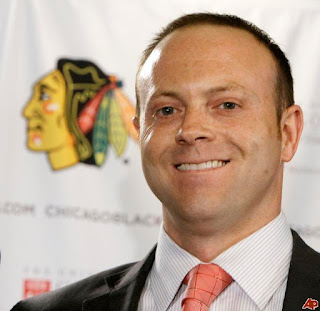Brian Murphy of KNBR's Murph and Mac show said it well when he admitted, "it's popular to hate on Levi's Stadium." I'm a nominal fan and his words resonated more deeply with me than they should have. As someone who has lived and worked in the City by the Bay for 15 years now (I can't believe that!), it's unfortunate that our team now plays in a venue 40 miles south. Miles! minutes might be another...?... For Niner fans, the (hate) list is long. But I would like to offer a nugget in the gold rush that has hit Silicon Valley and San Francisco for the Forty-Niner Faithful: The 49er Museum.
I don't know why, but I entered with little to no expectations. I am a sports enthusiast and American Studies major, so I should have held high hopes. I guess Murph's words have removed the rose in my colored glasses. But that rose, or Niner red is back and with this posting, I would like to offer three insights I gained that will stay me with!
1. The Forty-Niners are the first professional sports team born and bred in San Francisco.
The Giants came to town in 1958, but that was by way of the Polo Grounds in New York. So when the Morabito brothers bought the franchise—a dream that allegedly began over many lunch breaks at the Saint Francis Creamery—what is now also the oldest professional sports team from the West Coast became a reality.
Of additional interest might be the purported story behind the Niner's team colors. Victor and Tony, two graduates of St. Ignatius (where I teach) played football at Santa Clara University. They adopted the colors of their collegiate alma mater for their team. NB: today Santa Clara goes with a maroon and white and like many other schools—black. As I've said before "black is the new black."
 |
| The greatest WR & QB in Niner history |
2. It's all about chemistry.
Anyone who has ever been in a romantic relationship knows this is true, but chemistry is never limited to a love interest. A good team has great chemistry. Friends "click" or they don't. When my roommate and I asked a new priest why he chose to be a diocesan priest rather than one in a religious order, he admitted that he didn't find the right chemistry with the religious communities he visited. "I liken it to a relationship, I didn't find the right chemistry" he confessed. "Everyone understands it when I put it that way." Indeed.
Look up to the ceiling when you are inside the Niner museum and you will see footballs hanging midair—206 of them. This display plays tribute to the 206 passes that Jerry Rice caught for touchdowns, as a Niner. 19 of those pigskins were for TDs in the post-season. According to #80, the majority of those were made possible because of the great chemistry he shared with quarterback Joe Montana. In the introductory video, Rice says "I always told Joe, if you were a woman I would date you." I have a feeling a lot of men might feel that same way.
As I heard that, I thought of all that great chemistry has made possible. Chemistry is a factor we cannot control, as much as we would like to. Give thanks to the Creator for those with whom you share great chemistry.
 |
| The image in the video is up close and hard to believe! |
3. The role of the Superbowl Championship in 1981.
I love history and I love it that much more when it includes the context of sport.
I recommend that you take the 10 minutes to watch the introductory video inside the museum as it sets the tone for what you will see decade by decade. Many stories, profiles, facts and accomplishments have stayed with me, but a poignant one was the impact of the Niner's victory in their first Superbowl.
The Niners had struggled in the late '70s. They were the laughing stock of the NFL and even coaching Bill Walsh didn't make the switch overnight. The city itself had seen very dark days with the assassination of Mayor George Moscone and City Supervisor Harvey Milk. Racism and crime were tearing neighborhoods apart.
But times began to change. Dwight Clark and "The Catch" led to a win over the hated Dallas Cowboys and an entry to Motown for Superbowl XVI against the Cincinnati Bengals. With the 26-21 victory, the city had something to rally around and celebrate, as oppose to mourn.
There is an image that captures the victory parade. Players, politicians and coaches wave from their respective cable cars to thousands upon thousands of adoring fans. The image looks like a cartoon it is so incredible...whimsical...supersize. It made me wish I had been there.
Forty-niner fans have much to be grateful for. I have only written but a few observations from my brief visit with a friend in town from Washington, DC. We both enjoyed interactive presentations as well—I tried my stint as a Niner cheerleader (a member of the Gold Rush) and he at the NFL combine.
Maybe it's appropriate that the Dead are playing at Levi's. A band that lived in the Haight and whose music has underscored the energy of the city by the bay has another chapter in its book. One worth learning and celebrating...even if it is 45 miles south of Shakedown Street.


























